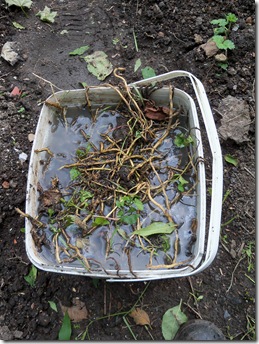In the vegetable plot the paths often remain unproductive, especially so if you grow crops in beds with 12"-18" paths between them. We find one of the ideal vegetables to grow on these paths is the common Dandelion ( Taraxacum officinale). Many people I know do not class this as a vegetable, but instead think of it only as a weed.
That is a shame the humble Dandelion in fact is very efficient accumulator plant. The deep roots reaching down into the subsoil to bring up many valuable minerals and trace elements. Along with the high vitamin content, it's a good source of vitamin C and exceptional as a source of Beta Carotene. Well worth eating with many health benefits.
Some say it is too bitter, but we have never found this, in fact we enjoy the bitterness and find it is a great balance along with other sweeter vegetables eaten in salads.
 The Dandelion (Taraxacum officinale) with its deep roots do not interfere with other plants growing in beds, a perfect perennial catch crop.
The Dandelion (Taraxacum officinale) with its deep roots do not interfere with other plants growing in beds, a perfect perennial catch crop.
We do suffer a bit in the garden from Bindweed (Calystegia sepium) invading the garden from the banks and and hedges. We continuously dig out the roots. But what to do with them after? Throwing them away is anathema, that's nutrients going out of the garden.
Putting them into old compost bags and tying the tops to exclude light works, but takes longer to kill and rot them down, only a bit needs to survive and off it sprouts again.
So a simpler solution is to drop them in a bucket and fill with water. Any that stick above the water just need to be pushed under. gradually the roots suffocate and die. You know when they have died, the bucket starts to smell (actually it stinks). It's safe to put on the compost heap then where the nutrients are recycled.
 The roots take about 2-3 months to degrade depending on the weather.
The roots take about 2-3 months to degrade depending on the weather.
Many other difficult weed roots can be treated the same with good results.
No comments:
Post a Comment